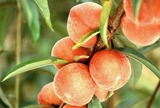
Changemakers can be activists, non-profit workers, volunteers and even kids.
- Subject:
- Social Science
- Material Type:
- Activity/Lab
- Lesson
- Provider:
- PBS LearningMedia
- Author:
- WUCF
- Date Added:
- 01/30/2023

Changemakers can be activists, non-profit workers, volunteers and even kids.

This activity is an on-line research activity in which students research different Minnesota lakes and determine their physical characteristics, chemical characteristics, and the overall health of the lake.

This seminar explores experiments in education and discusses how education and learning might be done, through reading and discussion. This seminar is not a survey of experiments in education, but rather, its goal is to determine how learning should happen and what kinds of contexts allow it to happen.

This activity is a guided inquiry where students will find their own lichen and classify it into one of three categories. They will collect, analyze, and present their finding to the class.

In this activity on page 1 of the PDF, learners compare the relative sizes of biological objects (like DNA and bacteria) that can't be seen by the naked eye. Learners will be surprised to discover the range of sizes in the microscopic world. This activity can be followed up with a second activity, "What's in a microbe?", located on page 3 in the same resource.

This course is an introduction to Continuous Improvement (CI). It is designed for students who have never heard that term. It is a class based on learning a concept or skill and then applying it to one’s life – experiential learning. It is my hope that this material helps you in your work to expand the confidence and knowledge of students in team problem solving.

This activity is an introduction to a magnifying glass as a science tool.

This activity is an extension activity following a unit study on mixtures and solution. Students will use variables to create a unique cola formula and present their findings.

This activity is an investigative introduction to mapping. Students create maps and determine important map features.

In this problem-based learning module, students will examine various forms of media and the ways that it can influence personal and social behavior. They first will work in stations to examine different types of media and explore what that media is while also addressing how it makes them feel. Afterward, they will work in small groups to create their own influential piece of media which communicates a problem they feel is facing their school.


Distributions and Variability
Type of Unit: Project
Prior Knowledge
Students should be able to:
Represent and interpret data using a line plot.
Understand other visual representations of data.
Lesson Flow
Students begin the unit by discussing what constitutes a statistical question. In order to answer statistical questions, data must be gathered in a consistent and accurate manner and then analyzed using appropriate tools.
Students learn different tools for analyzing data, including:
Measures of center: mean (average), median, mode
Measures of spread: mean absolute deviation, lower and upper extremes, lower and upper quartile, interquartile range
Visual representations: line plot, box plot, histogram
These tools are compared and contrasted to better understand the benefits and limitations of each. Analyzing different data sets using these tools will develop an understanding for which ones are the most appropriate to interpret the given data.
To demonstrate their understanding of the concepts, students will work on a project for the duration of the unit. The project will involve identifying an appropriate statistical question, collecting data, analyzing data, and presenting the results. It will serve as the final assessment.

Students critique and improve their work on the Self Check from Lesson 13.Key ConceptsMeasures of spread (five-number summary) show characteristics of the data. It is possible to generate an appropriate data set with this information.Goals and Learning ObjectivesApply knowledge of statistics to solve problems.Identify the five-number summary, and understand measures of center and use their properties to solve problems.Track and review choice of strategy when problem solving.

Getting Started
Type of Unit: Introduction
Prior Knowledge
Students should be able to:
Solve and write numerical equations for whole number addition, subtraction, multiplication, and division problems.
Use parentheses to evaluate numerical expressions.
Identify and use the properties of operations.
Lesson Flow
In this unit, students are introduced to the rituals and routines that build a successful classroom math community and they are introduced to the basic features of the digital course that they will use throughout the year.
An introductory card sort activity matches students with their partner for the week. Then over the course of the week, students learn about the lesson routines: Opening, Work Time, Ways of Thinking, Apply the Learning, Summary of the Math, and Reflection. Students learn how to present their work to the class, the importance of taking responsibility for their own learning, and how to effectively participate in the classroom math community.
Students then work on Gallery problems to further explore the program’s technology resources and tools and learn how to organize their work.
The mathematical work of the unit focuses on numerical expressions, including card sort activities in which students identify equivalent expressions and match an expression card to a word card that describes its meaning. Students use the properties of operations to identify equivalent expressions and to find unknown values in equations.

Gallery OverviewAllow students who have a clear understanding of the content thus far in the unit to work on Gallery problems of their choosing. You can then use this time to provide additional help to students who need review of the unit's concepts or to assist students who may have fallen behind on work.Gallery DescriptionRepresent a Math ProblemStudents explore the number line tool and the double number line tool. They use the number line tool to solve a problem about the weights of a cheetah and a fisher cat.Research ExpressionsStudents learn the difference between numerical expressions and variable expressions. They watch video tutorials, review worked examples, use the Glossary, and explore other resources.Fish TankStudents create diagrams and use text and images as they solve a problem about the size of a fish tank.

Students review the ways classroom habits and routines can strengthen their mathematical character. Students learn what a Gallery is and how to choose a Gallery problem to work on. They then choose one of three Gallery problems that introduce the unit’s technology resources. The three Gallery problems combine working with expressions with the resources available with this unit.Key ConceptsUnderstand that a Gallery gives students a choice of several problems. Understand what to consider when choosing a problem. Know how to work on a Gallery problem and how to present work on gallery problems.Goals and Learning ObjectivesKnow how to choose a problem from a Gallery.

Putting Math to Work
Type of Unit: Problem Solving
Prior Knowledge
Students should be able to:
Solve problems with rational numbers using all four operations.
Write ratios and rates.
Use a rate table to solve problems.
Write and solve proportions.
Use multiple representations (e.g., tables, graphs, and equations) to display data.
Identify the variables in a problem situation (i.e., dependent and independent variables).
Write formulas to show the relationship between two variables, and use these formulas to solve for a problem situation.
Draw and interpret graphs that show the relationship between two variables.
Describe graphs that show proportional relationships, and use these graphs to make predictions.
Interpret word problems, and organize information.
Graph in all quadrants of the coordinate plane.
Lesson Flow
As a class, students use problem-solving steps to work through a problem about lightning. In the next lesson, they use the same problem-solving steps to solve a similar problem about lightning. The lightning problems use both rational numbers and rates. Students then choose a topic for a math project. Next, they solve two problems about gummy bears using the problem-solving steps. They then have 3 days of Gallery problems to test their problem-solving skills solo or with a partner. Encourage students to work on at least one problem individually so they can better prepare for a testing situation. The unit ends with project presentations and a short unit test.

Students choose a project idea and a partner or group. They write a proposal for the project.Key ConceptsProjects engage students in the applications of mathematics. It is important for students to apply mathematical ways of thinking to solve rich problems. Students are more motivated to understand mathematical concepts if they are engaged in solving a problem of their own choosing. In this lesson, students are challenged to identify an interesting mathematical problem and to choose a partner or a group to work with collaboratively on solving that problem. Students gain valuable skills in problem solving, reasoning, and communicating mathematical ideas with others.Goals and Learning ObjectivesIdentify a project idea.Identify a partner or group to work collaboratively on a math project.

Lesson OverviewAllow students who have a clear understanding of the content in the unit to work on Gallery problems of their choosing. You can use this time to provide additional help to students who need review of the unit's concepts or to assist students who may have fallen behind on work.GalleryMap ReadingStudents will examine a street map, interpret the street map coordinates, and relate the street map to an x-y coordinate grid.Burning CandlesStudents will explore how the height of a burning candle changes with time. In one case, they will get information by watching a video of candles burning. In another case, they will be given data with which they can calculate a candle's height at any given time.More DirectionsStudents are given instructions on what path to take to get to a friend's house. But these instructions are incomplete because a starting point is not given. Their task is to figure out which starting points will make these instructions work.LeaguesStudents will determine how the length of a sports league's playing season is affected by increasing the number of teams from 22 to 30. They will use the number of times a game can be played each week and the present length of the season to solve the problem.TrafficStudents will figure out the distance between cars on a highway and how many cars there are along a 1-mile stretch of the highway. They will use the speed of the cars and how often a car passes a certain point to solve the problem.Leaky FaucetStudents will watch a video of a sink filling with water. From that, they will determine how long it will take for the sink to fill up completely.Frog JumpStudents are shown a drawing of yellow and green frogs arranged in a straight line. The yellow frogs are on the left, and the green frogs are on the right. Their task is to figure out how the yellow and green frogs can switch positions if they can move only by leaping according to certain rules.

Students design and work on their projects in class. They review the project rubric and, as a class, add criteria relevant to their specific projects.Key ConceptsThroughout this unit, students are encouraged to apply the mathematical concepts they have learned over the course of this year to new settings. Help students develop and refine these problem-solving skills:Creating a problem-solving plan and implementing their plan systematicallyPersevering through challenging problems to find solutionsRecalling prior knowledge and applying that knowledge to new situationsMaking connections between previous learning and real-world problemsCommunicating their approaches with precision and articulating why their strategies and solutions are reasonableCreating efficacy and confidence in solving challenging problems in a real worldGoals and Learning ObjectivesCreate and implement a problem-solving plan.Organize and interpret data presented in a problem situation.Analyze the relationship between two variables.Use ratios.Write and solve proportions.Create rate tables to organize data and make predictions.Use multiple representations—including tables, graphs, and equations—to organize and communicate data.Articulate strategies, thought processes, and approaches to solving a problem and defend why the solution is reasonable.